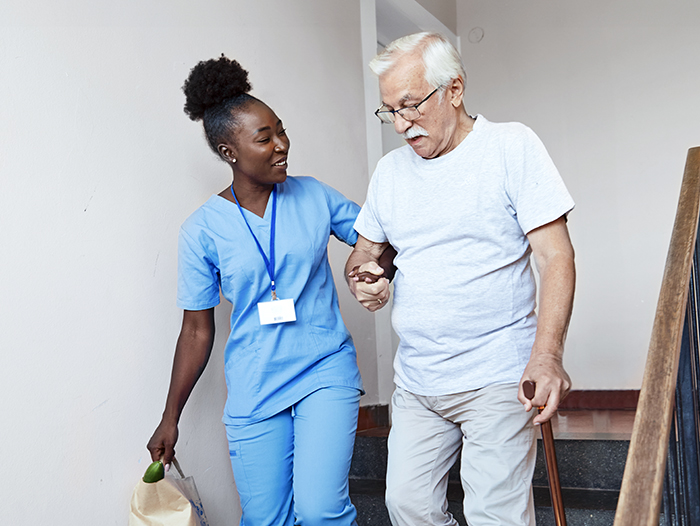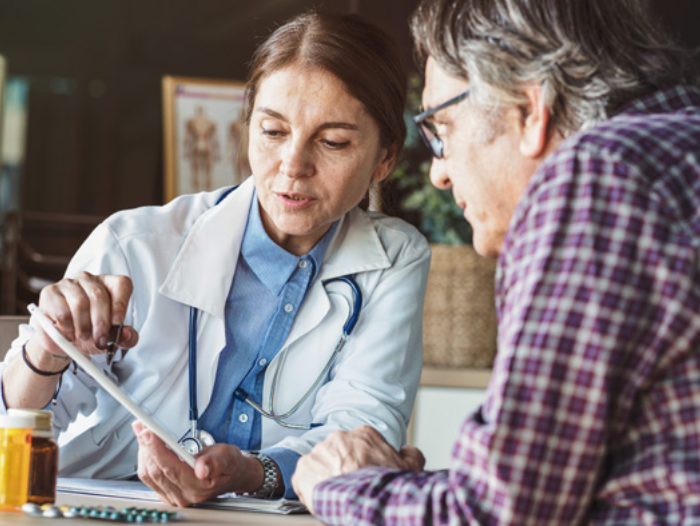Auto logout in seconds.
Continue LogoutAccording to a new study published in Nature Neuroscience, even just looking at a sick person in virtual reality (VR) can trigger the body's immune system, something the researchers described as being akin to a "smoke detector in biological systems."
Study details and key findings
To understand how the brain helps prepare the body for an immune response, researchers conducted several experiments with 248 healthy participants who wore VR headsets. In each experiment, participants watched as three faces with neutral expressions repeatedly loomed toward them. The faces were of the same sex as the participants.
After this, participants were split into groups and shown the same three faces several times. Some groups saw the faces with a neutral expression, and some saw the faces with signs of viral infection, such as skin rashes. An additional subset of participants was also shown faces with fearful expressions.
In one experiment, the participants were asked to press a button when they felt a touch to their face. The researchers found that participants pressed the button faster when they felt a touch from the sick face than when they felt a touch from the neutral or fearful face.
According to the researchers, "[t]hese findings suggest an integrated neuro-immune reaction in humans toward infection threats, not solely following physical contact."
The researchers also ran EEG tests on the participants and found that the brain system that represents the space closely surrounding the body became activated as the virtual faces moved closer. However, participants' brains responded differently when they saw faces with signs of infection, with activation occurring in parts of the brain associated with detecting and filtering threats.
Functional MRI scans further supported these results, with the scans showing that there was a greater connection between the brain's threat detection area and the hypothalamus, which helps regulate the body's responses, when participants saw the sick faces.
Most notably, blood tests showed that participants who saw sick faces had increased activity of innate lymphoid cells, which are the immune system's first responders to pathogens, within two hours. According to the researchers, there was a similar rise in initial immune activity in the blood tests of people who had just received a flu vaccine.
"This is a completely new level of immune activation I wouldn't have expected … without entry of a pathogen into the body," said Camilla Jandus, an immunologist at the University of Geneva and one of the study's authors.
Commentary
According to Michael Irwin, a psychoneuroimmunologist at the University of California, Los Angeles, the study is "really remarkable" since it demonstrates that "people's immune system can be primed just by the visual recognition that someone looks sick."
Separately, Esther Diekhof from the University of Hamburg, said that the study "provides yet another good example for the existence of a mechanism that responds to potential contagion threats even before the immune system has come into contact with pathogens."
However, other health experts have noted that there are still many questions, and more research is needed to understand whether the observed responses could help the immune system fight off an infection.
"When we get infected, by Sars-CoV for instance, it can take a day or two for the infection to establish and for the immune system to become aware of it and respond, a long time after the initial encounter that stimulated this short-lived mobilization," said Benedict Seddon, a professor at University College London.
Currently, the researchers are working on furthering their study by examining whether the effects could last over hours and days and not just immediately after seeing a sick face. They also plan to monitor more cells and molecules.
Although the research is still in the early stages, the researchers say that the findings could have practical applications in the future, such as improving immune responses or the efficacy of certain drugs.
"If you have flu and take paracetamol, for instance, you could use virtual reality to boost the effect by modulating the immune system reaction," said Andrea Serino, a neuroscientist at the University of Lausanne in Switzerland and one of the study's authors.
(Inampudi, Science, 7/28; Makin, Science News, 7/28; Cassella, Science Alert, 8/4; Davis, The Guardian, 7/28; Trabanelli, et al., Nature Neuroscience, 7/28)
Don't miss out on the latest Advisory Board insights
Create your free account to access 1 resource, including the latest research and webinars.
Want access without creating an account?
You have 1 free members-only resource remaining this month.
1 free members-only resources remaining
1 free members-only resources remaining
You've reached your limit of free insights
Become a member to access all of Advisory Board's resources, events, and experts
Never miss out on the latest innovative health care content tailored to you.
Benefits include:
You've reached your limit of free insights
Become a member to access all of Advisory Board's resources, events, and experts
Never miss out on the latest innovative health care content tailored to you.
Benefits include:
This content is available through your Curated Research partnership with Advisory Board. Click on ‘view this resource’ to read the full piece
Email ask@advisory.com to learn more
Click on ‘Become a Member’ to learn about the benefits of a Full-Access partnership with Advisory Board
Never miss out on the latest innovative health care content tailored to you.
Benefits Include:
This is for members only. Learn more.
Click on ‘Become a Member’ to learn about the benefits of a Full-Access partnership with Advisory Board
Never miss out on the latest innovative health care content tailored to you.


